Printing 'Seals'
Printing 'Seals'
Many woodblock prints carry the impression of a 'seal', either in place of, or in addition to, the artist's signature. In the orient, such a seal is the signature, but in the west, it is usually considered a decorative addition to the print, not having the same 'authority' as the pencilled signature.
There are two common methods to make such seals on woodblock prints:
- with a 'real' stone seal. The desired seal image is carved (in reverse) on a blank seal (made of stone, ivory, bone or plastic), and is then stamped on the paper, using a vermillion pigment.
- printed in the normal fashion from a woodblock. The image is carved on a woodblock, in exactly the same way as the rest of the print. It is then printed as just another 'colour' of the print, either in a press, or with a baren.
Making 'real' seals is an art in itself, and I don't have much experience with it. I use one here in Japan for my personal affairs (banking, etc.). I carved it myself from a small stone 'blank', of a type available at any stationery store.
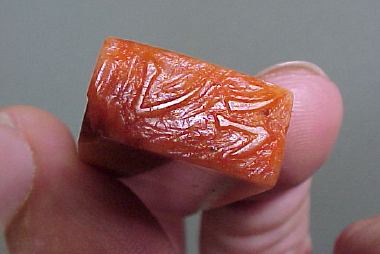
Such seals are used with small stamp pads impregnated with a vermillion pigment:
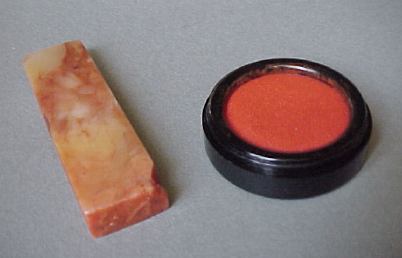
Contemporary print artists here in Japan frequently use this method for sealing their prints, but in the 'old days' the 'carved on the block' method was used almost exclusively. The seals you see on prints designed by such people as Hiroshige are all carved on the blocks.
This rest of this page will deal with that method.
Here is an example of a printed seal (from one of my 'surimono' prints)

The original from which I took this image was a very old screen painting which had been sealed with an old seal, one quite worn and chipped. I attempted to reproduce the worn effect by carving a block to match:
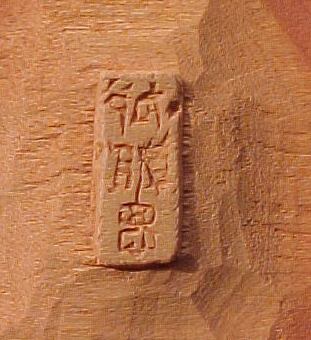
As the final step in the printing process, an impression was taken from this block (in the normal way with pigment, paste and a baren) using the pigment known as 'shu'. This is a vermillion pigment, and I have read somewhere that it is a compound known as 'sulphuretted mercury'.
The vermillion can be mixed in whatever shade one desires ...
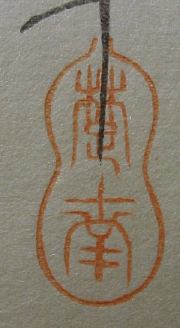
If you want the seal to have the 'hand-stamped' look, mix the pigment with a bit of alcohol in addition to the water, and the vermillion will then slightly bleed into the paper. (Experiment on some scraps first - waiting at least a few days to see how far it bleeds.) For this print I added a touch of cognac ...
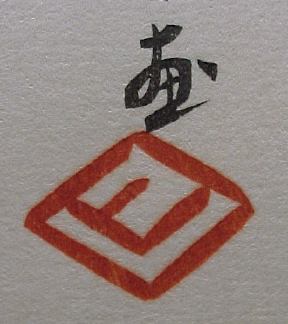
That's pretty much all there is to it!
